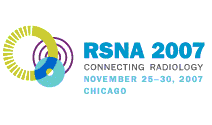
Abstract Archives of the RSNA, 2007
Wilhelm Harald Flatz MD, Presenter: Nothing to Disclose
Olaf Dietrich, Abstract Co-Author: Nothing to Disclose
Stefan Oswald Schoenberg MD, PhD, Abstract Co-Author: Nothing to Disclose
Maximilian F. Reiser MD, Abstract Co-Author: Nothing to Disclose
To develop a methodical approach for quantitative evaluation and analysis of image quality of diagnostic DTI imaging using parallel magnetic resonance imaging (MRI) acquisition methods (PAT) at 1.5 T and 3.0 T.
We examined prospectively 26 healthy volunteers on a 1.5 T and a 3.0 T scanner.Standardized diffusion-weighted images were acquired with a spin-echo EPI sequence and two different voxel sizes (1.8×1.8×3.6=11.7mm³ and 2×2×2=8mm³) as well as three different numbers of signal averages (NSA) of 8, 4 and 2 using comparable sequence parameters at both magnetic field strengths.PAT using GRAPPA reconstruction with acceleration factors of 2 and 3 was applied.These acquisitions were repeated twice to assess the local noise level from difference images.ROI-based quantitative analysis was performed with on-board tools of the MR scanners by positioning ROIs into three different brain areas.Mean value, standard deviation and number of pixels were calculated for each ROI. Two blinded radiologists independently performed the ROI positioning and evaluation.Signal-to-noise ratios(SNR) were calculated based on the standard deviation in the difference image for each ROI, thus taking into account the inhomogeneous noise distribution of PAT acquisitions. Kappa test was applied for quantification of inter-observer agreement.
Normalized to the SNR of the anisotropic 11.7-mm³ measurement with 8 averages at 1.5T, 180% of this SNR was found for the same sequence at 3T. SNRs for the sequences with 2 averages were significantly different with 55.9% for 1.5T and 95.6% for 3T respectively. For acquisitions with isotropic resolution and 4 averages, the corresponding values were 61.1% at 1.5T and 97.8% at 3T. Inter-observer agreement was very good (0.92).
DTI at 3T results better image quality in terms of SNR compared to 1.5T. The same SNR as at 1.5T can be obtained with increased isotropic resolution and reduced scan time (4 averages instead of 8 averages) at 3T.
Diagnostic diffusion tensor imaging at 3T is qualitatively superior to DTI at 1.5T. DTI is therefore recommended to be performed at 3T for more accurate quantification and improved patient workup.
Flatz, W,
Dietrich, O,
Schoenberg, S,
Reiser, M,
Quantitative Analysis of DTI Image Quality Using Parallel Imaging Techniques Comparing High Field 1.5 T and 3.0 T MR Systems. Radiological Society of North America 2007 Scientific Assembly and Annual Meeting, November 25 - November 30, 2007 ,Chicago IL.
http://archive.rsna.org/2007/5011601.html

